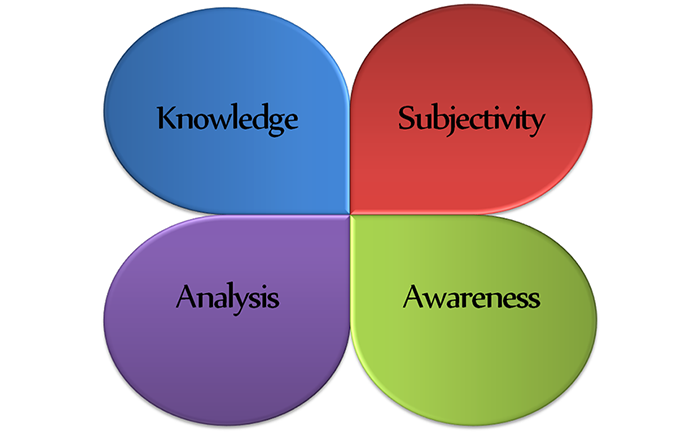The IPIC Model for Language Learning

The intercultural, pragmatic, and interactional competence (IPIC) model is a tool that both instructors and learners can use when learning any pragmatic concept (Sykes et al., 2020). It consists of four quadrants that guide the teacher and the learner through all the necessary elements. For example, when teaching requests, the ‘Knowledge’ quadrant is used for vocabulary and grammar that is required to make requests. The ‘Analysis’ quadrant allows the learner to examine requests made by expert speakers in different contexts and observe variations in the target language (TL). Under ‘Subjectivity’, the learner explains their own choice. This is where learners can make choices based on their own view of the world. ‘Awareness’ guides the student to examine the effect of the request on the listener, and make any needed repairs.
The IPIC model is a great way to visualize what a learner’s thought process might be in a certain scenario, as well as assess how much a learner understands the pragmatic functions they are using. The IPIC model contains four components: knowledge, analysis, awareness, and subjectivity.

As an example, the function of apologizing would be described in the following way: knowledge is when a learner knows the various grammar forms and vocabulary words that can be used for apologizing, such as “I’m sorry,” “My bad,” and “I didn’t mean for that to happen.” Analysis is when a learner can assess their situation and choose the most appropriate language based on the power dynamics, their closeness or lack thereof with their interlocutor, and the severity of the situation. Awareness is when a learner can react appropriately to their interlocutor’s response, and subjectivity is when the learner can balance what is expected of them by their interlocutors and what they are comfortable with according to their identity.
IPIC can be used both in in-person and technology-mediated learning. Understanding the model might be a learning curve, but it becomes easier with practice. Once mastered, IPIC is a great tool that instructors can use when designing curriculum or planning lessons, and students can use when learning a new language, or even examining one’s own.
References:
Sykes, J. M., Malone, M. M., Forrest, L., & Sağdıç, A. (2020). Affordances of digital simulations to measure communicative success. Transdisciplinary innovations for communicative success, np Singapore: Springer. Available at: https://caslsintercom.uoregon.edu/uploads/contentUploads/202009/03/2020_Sykes_et_al_09-03-20.pdf
